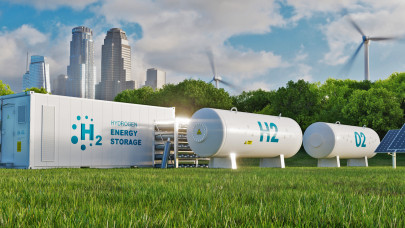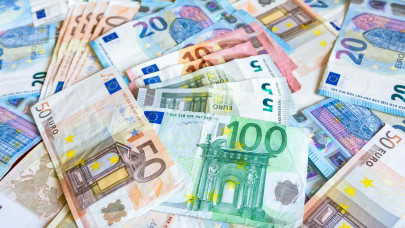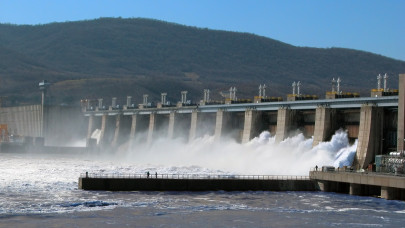Rail tracks are expensive to build and, in the EU, increasingly congested. The proposed Regulation will optimize their use, improve cross-border coordination, increase punctuality and reliability, and ultimately attract more freight companies to rail.
Passengers will benefit from additional rail services as the capacity of the network will be better used, impacting positively the cross-border services by enabling more frequent connections and earlier ticket booking, among others.
”With today's proposals, we take another step on the journey to sustainable transport. Every day, billions of goods are traveling on European roads and railway tracks, from harbors and customs points to shops and to our homes. Our proposals will help to get more zero-emission trucks on the road and make sure that this freight is handled in the most sustainable way possible, whether it travels by truck, train, or barge”, says Frans Timmermans, Executive Vice-President of the European Green Deal.
Current rules on capacity management are decided annually, nationally, and manually. This does not favor cross-border traffic (around 50% of rail freight crosses borders); the fractured approach leads to delays at borders. This, in turn, hinders the functioning of the Single Market. Delays due to congestion caused by uncoordinated maintenance work are also common.
EC's proposal for a regulation on the use of railway infrastructure capacity in the single European railway area builds on the industry-led Timetable Redesign Project. The aim is to better respond to the different needs of the rail sector: stable timetables and early booking of tickets for passenger services, and flexible train runs adapted to just-in-time supply chains for freight shippers.
”With today's proposals, we are ensuring we get the best out of the EU's Single Market. Freight transport in the EU is responsible for an annual turnover of €938 billion, and through our initiatives, we want to increase the availability of rail capacity for freight and cross-border trains; we instate an accurate, homogenous system of counting emissions from transport operations, and we make road transport more efficient”, says Adina Vălean, Commissioner for Transport.
More than 50% of freight is carried by road in the EU (2020 figures), and this transport is a major contributor to greenhouse gas emissions. The current Weights and Dimensions Directive sets the maximum weight length, width, and height for heavy-duty vehicles. EC's proposal revises these rules to allow additional weight for vehicles using zero-emission technologies, as they tend to increase a vehicle's weight. This will incentivize the take-up of cleaner vehicles and technologies.
Once the technology develops and zero-emission propulsion systems become lighter, thanks also to the use of aerodynamic devices and cabs, cleaner vehicles will benefit from additional loading payload in comparison to conventional lorries.
The uptake of more aerodynamic cabins and other energy-saving devices will also be encouraged, not only improving driver comfort and safety but also increasing the efficiency of zero-emission powertrains – meaning the mechanism that transmits the power from the engine to move the vehicle.
The proposal will also provide clarity on the use in cross-border traffic, in certain conditions, of heavier and longer vehicles, which are allowed today in some Member States. This includes clarifying that Member Stated who allow European Modular Systems (EMS) in their territories, will also be able to use them in international operations among these neighboring Member States, without a need for a bilateral agreement and without a restriction of crossing only one border. This will mean the same amount of cargo can be carried in fewer trips.
To encourage intermodal transport, whereby goods are moved using two or more transport modes but with a standardized cargo unit (like a container trailer or other), lorries, trailers, and semitrailers will be allowed to carry extra weight. The extra height will also facilitate the transport of high-cube containers by standard vehicles.
The Commission is proposing a common methodological approach for companies to calculate their greenhouse gas emissions if they choose to publish this information, or if they are asked to share it for contractual reasons. The proposed methodology is based on the recently adopted ISO/CEN standard for the quantification and reporting of greenhouse gas emissions arising from the operation of transport chains of passengers and freight. Reliable data on door-to-door emissions will enable operators to benchmark their services and allow consumers to make informed choices on transport and delivery options.
The proposals will now be considered by the European Parliament and the Council in the ordinary legislative procedure.
Freight transport is the backbone of the EU's Single Market – it keeps supermarkets, factories, and pharmacies stocked, and enables European companies to sell their products across the continent – and beyond. Some 6 million people worked in the EU freight sector in 2020.
But freight is also responsible for over 30% of transport CO2 emissions. And as the EU economy grows, emissions are likely to rise unless decarbonization measures are put in place: freight transport is expected to grow by around 25% by 2030, and 50% by 2050.
The package of proposals is part of a broader effort to make mobility and transport more sustainable. It follows on from the key components of the Fit for 55 Package, such as its targets for recharging and refueling stations, and for the deployment of sustainable fuels in aviation and maritime transport.
To complete today's proposals, the Commission is planning to revise the Combined Transport Directive later this month. The Commission will consider the possible inclusion of a range of regulatory, operational, and economic measures to make intermodal transport more competitive.
Today's package also complements the Commission's proposal to update its Trans-European Transport Network (TEN-T) policy through incentives and requirements for infrastructure development, and by better integrating the different modes within a multimodal transport system. Digital technologies are also helping to increase efficiency, including the European Rail Traffic Management System and Digital Automatic Coupling for rail, the Electronic freight transport information Regulation, and the European Maritime Single Window Environment.
‘Greening Freight Transport' is Flagship 4 of the Sustainable and Smart Mobility Strategy. The Strategy is a roadmap to decreasing transport emissions by 90% by 2050, as requested by the European Green Deal. Many of the Strategy's milestones describe how freight transport needs to become greener, such as by doubling rail freight traffic by 2050, ensuring new heavy-duty vehicles are zero-emission by the same date, and having zero-emission, ocean-going ships market-ready by 2030.











